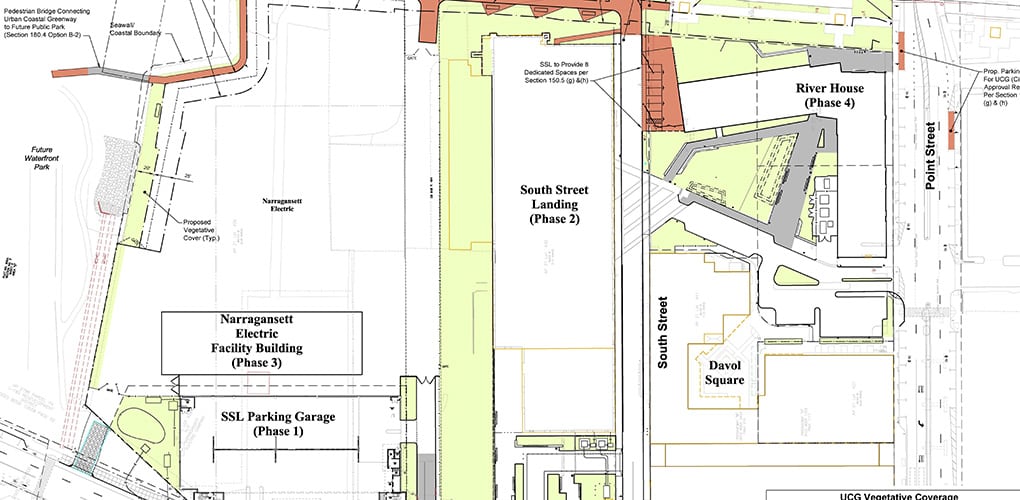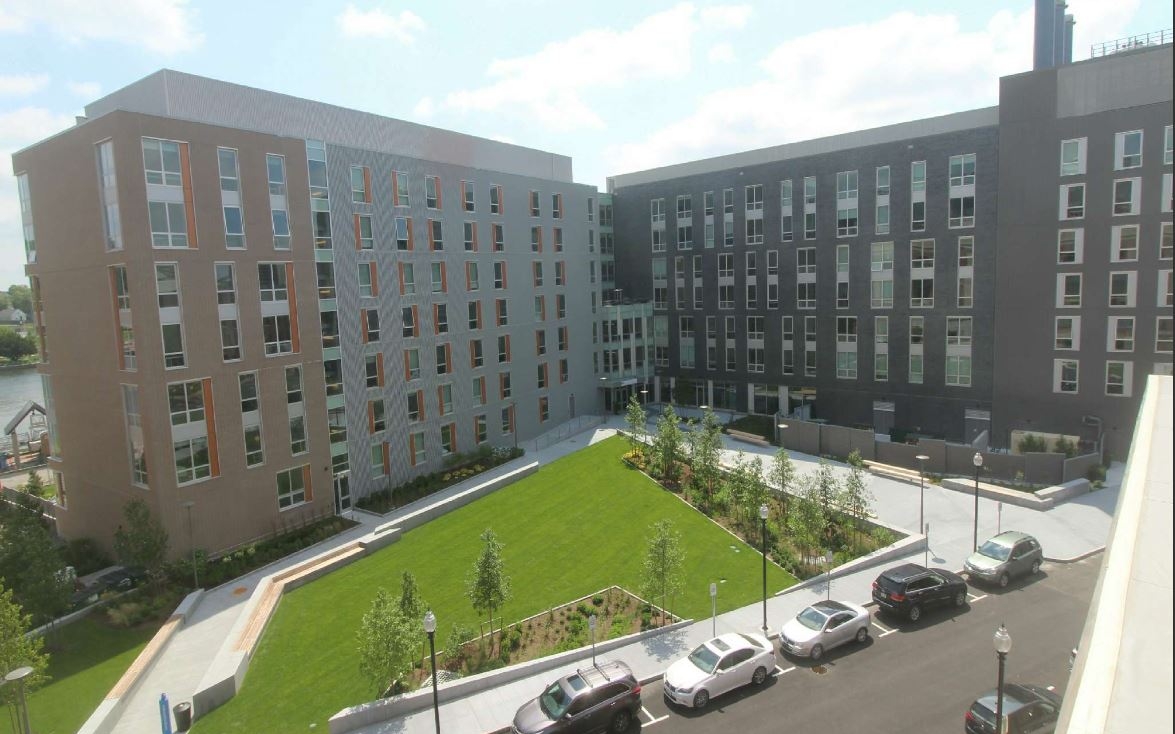South Street Landing
Providence, Rhode Island

The South Street Landing project is a significant multi-phase land redevelopment project in the heart of Providence’s Jewelry District. The project redeveloped approximately 10.7 acres of previously industrial waterfront land for a variety of new uses including residential, commercial, industrial, and educational/institutional. The project includes a 1,100 LF extension of the Point Street Landing Riverwalk that connects Point Street to the new Providence Riverfront Parks.
Municipal infrastructure improvements consisted of the full reconstruction of South Street including a new stormwater drainage system, new gas service, and a water main extension that provides a loop connection between South Street and Point Street. Stormwater improvements included the design and replacement for approximately 600 liner feet of the drainage system within South Street from Eddy Street to the point of discharge at the Providence River. The section of south Street was known for problematic flooding. Through the design process and field investigation, BETA was able to determine the existing drainage system consisted of a section of 2’by 2’ stone culvert connected to 18-inch pipe with 4 catch basins connected to the system. The outfall at the river was submerged during periods of high tide.
BETA designed and permitted a new system to capable of conveying the City’s 25-year design storm requirement. The system incorporated check-valves at the discharge to prevent sea water from entering the system during tidal events
The development was initially led by CV Properties, LLC and has since been transferred to Wexford Science and Technology and GMH Capital Partners. The project rehabilitated and constructed a penthouse addition to the former Dynamo House (now called “South Street Landing”) to house administrative offices for Brown University and a shared nursing school facility for the University of Rhode Island and Rhode Island College. BETA provided civil engineering services and permitting for a number of jurisdictional agencies at both the local and state level. CRMC was the lead environmental agency, which had jurisdiction by purview of the site’s location adjacent to the Providence River, as well as RIDEM through its WQC program. A significant component of the site design and CRMC/RIDEM review was the stormwater management system.
BETA provided construction administration services to support the site, civil, and utility portions of the project, and prepared traffic management plans to allow for utility installation with the city streets.



